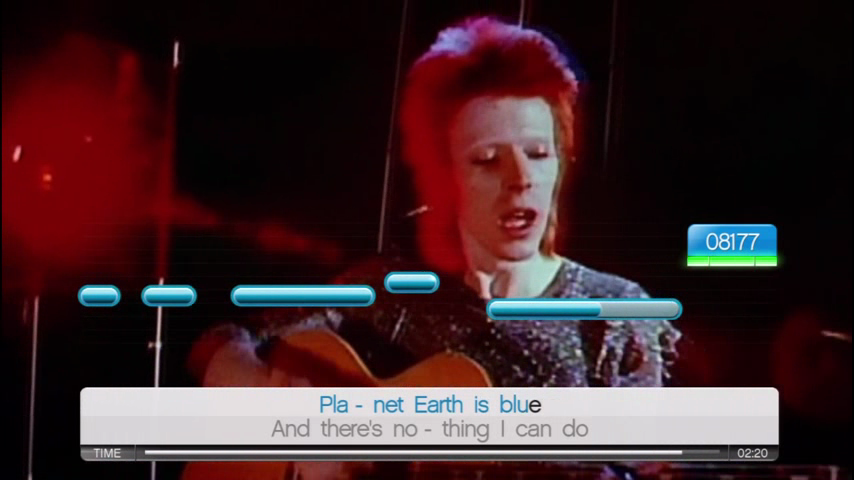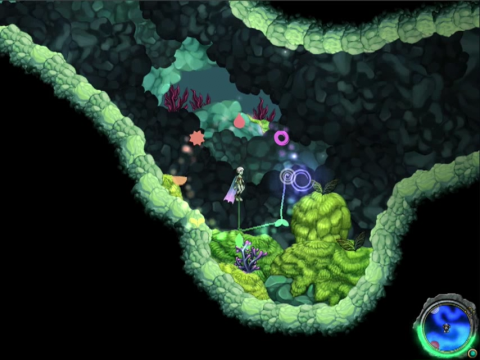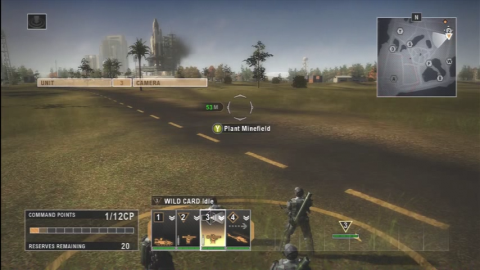Sound Input
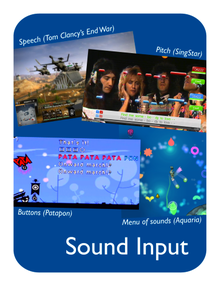
|
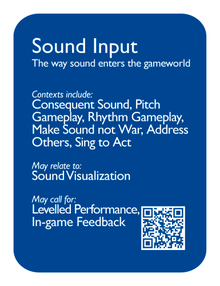
| |
| The card's front face | The card's back face |
Contents
Synopsis
| The way sound enters the game world. |
Relationships
Contexts include:
Consequent Sound ![]() , Pitch Gameplay
, Pitch Gameplay ![]() , Rhythm Gameplay
, Rhythm Gameplay ![]() , Make Sound not War
, Make Sound not War ![]() , Address Others
, Address Others ![]() , Sing to Act
, Sing to Act ![]() .
.
May relate to:
Sound Visualization ![]() .
.
May call for:
Levelled Performance ![]() , In-game Feedback
, In-game Feedback ![]() .
.
Description
Two approaches have been used to input sound: mapped (or indirect) and true (or direct).
Mapped input is by far the most frequent method and also the easiest to implement. Auditory stimuli are activated by non-auditory components of the interface or by diegetic actions. In practice, the player activates auditory events by pressing control buttons. Semantically, the game is the instrument.
Direct sound input allows the player to emit stimuli through a sound input device (microphone). There are several variations of direct sound input regarding the nature of the expected stimuli. Voice commands are a possibility that implies the software to be able to perform some level of speech recognition. Often the set of possible (voice) commands is reduced and carefully predetermined, in order to ease such recognition ([pending: ref to interview about Tom Clancy's EndWar).
Another approach is to allow disparate stimuli, provided that they carry particular acoustic properties that the game extracts through specific parameters (e.g., loudness, duration, frequency) ([pending: ref]). In practice that means the player is not forced to a particular sound – though the context may induce or inform about expected sounds. The fact that the player is able to experiment with different stimuli is a potential ludic aspect in itself. Another variation of direct input, where stimuli are not even strictly sonic, is to blow into the microphone in order to play in-game instruments ([pending: ref to Smule]). In this case it is the loudness of the (undisclosed) noise produced by blowing into the microphone that is used to model the interaction.
It is important to notice that although the designed solution for Sound Input is important, there is much more to explore regarding the possible contributions of sound to games beyond the activation model. Clearly being able to perform direct input enlarges the space of possibilities, but that alone does not bring great novelty to games, namely in terms of gameplay, narrative, and overall experience.
Examples
| Gnilley: |
Zekkyo Senshi Sakebrain: |
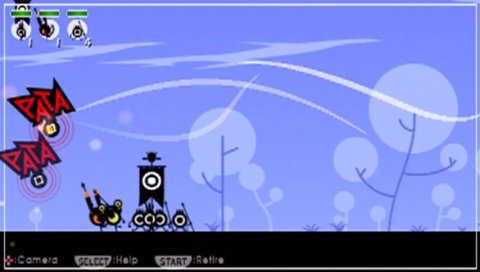  Patapon: The whole visual representation pulses with the sound – from the most objective, as the rectangle in the border and the drums’ onomatopoeias (mapping the Sound Input), to the more subtle, as the moves and details of the characters (which map and the Sound Input and the sound they echo themselves).
|
